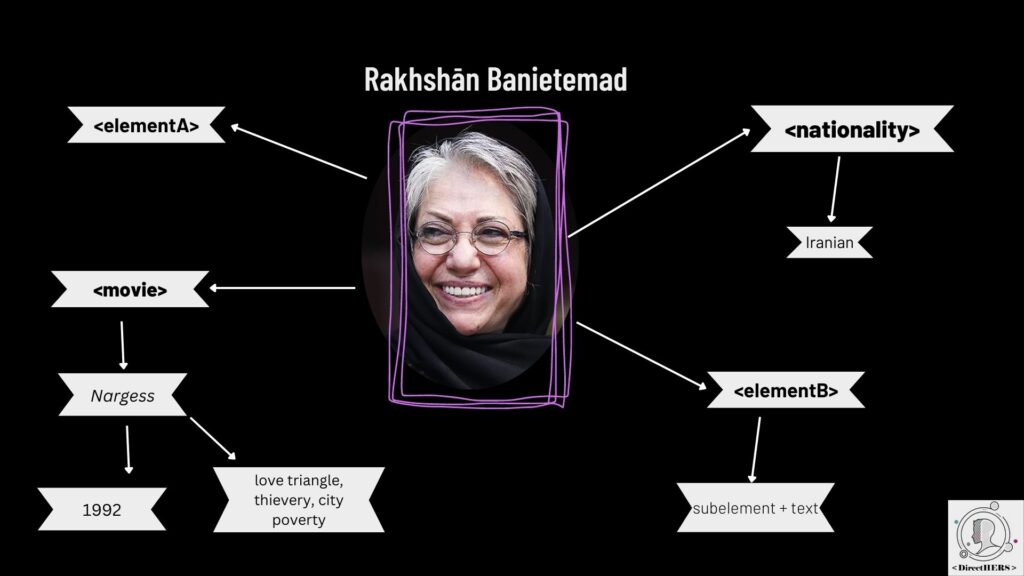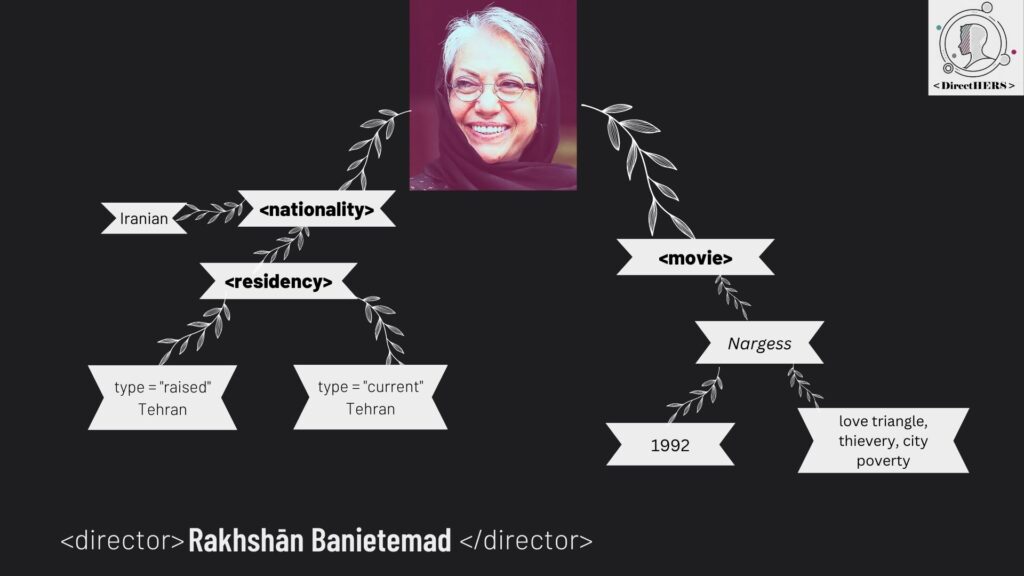As our encoding expedition project comes to a close, we have done extensive research on 15 women directors and produced several pilot files to showcase the flexibility of XML.
Research:
Our team has successfully collected and annotated the careers and works of 15 pioneering women directors from diverse cultural and ethnic backgrounds. By delving into their biographies, filmographies, and the themes they have tackled in and beyond their works, we’ve gained valuable insights into their feminist perspectives and impact on the film industry. We also learn about their struggles and failures, like funding or casting issues. The tag glossary is glowing while we annotate, but now we need to find where and when to stop to give a tentative range for our files and search engine.
Outreach:
Maria has produced tag network diagrams, and we will have an outreach video editing meeting to prepare short clips to showcase our work.
Technology:
The XML-XSLT-HTML mode runs lively, and each research team member will choose at least one director to play this model.
The search engine is under development. We discussed an option for a word cloud of our tags with clickable links, but we will see if we have enough time. Otherwise, a search box will do.
Our workflow will serve as a model for future projects aiming to build similar digital archives. We aim to show the workflow with screenshots and recordings to create a digital story.
The web dev work faced a challenge when GitHub pushed the page. Our tech team is working diligently to address this issue and restore the lost data. But since we kept our transferable XML files and written documents, we are also making a backup plan.
Thank everyone for their hard work and dedication!




